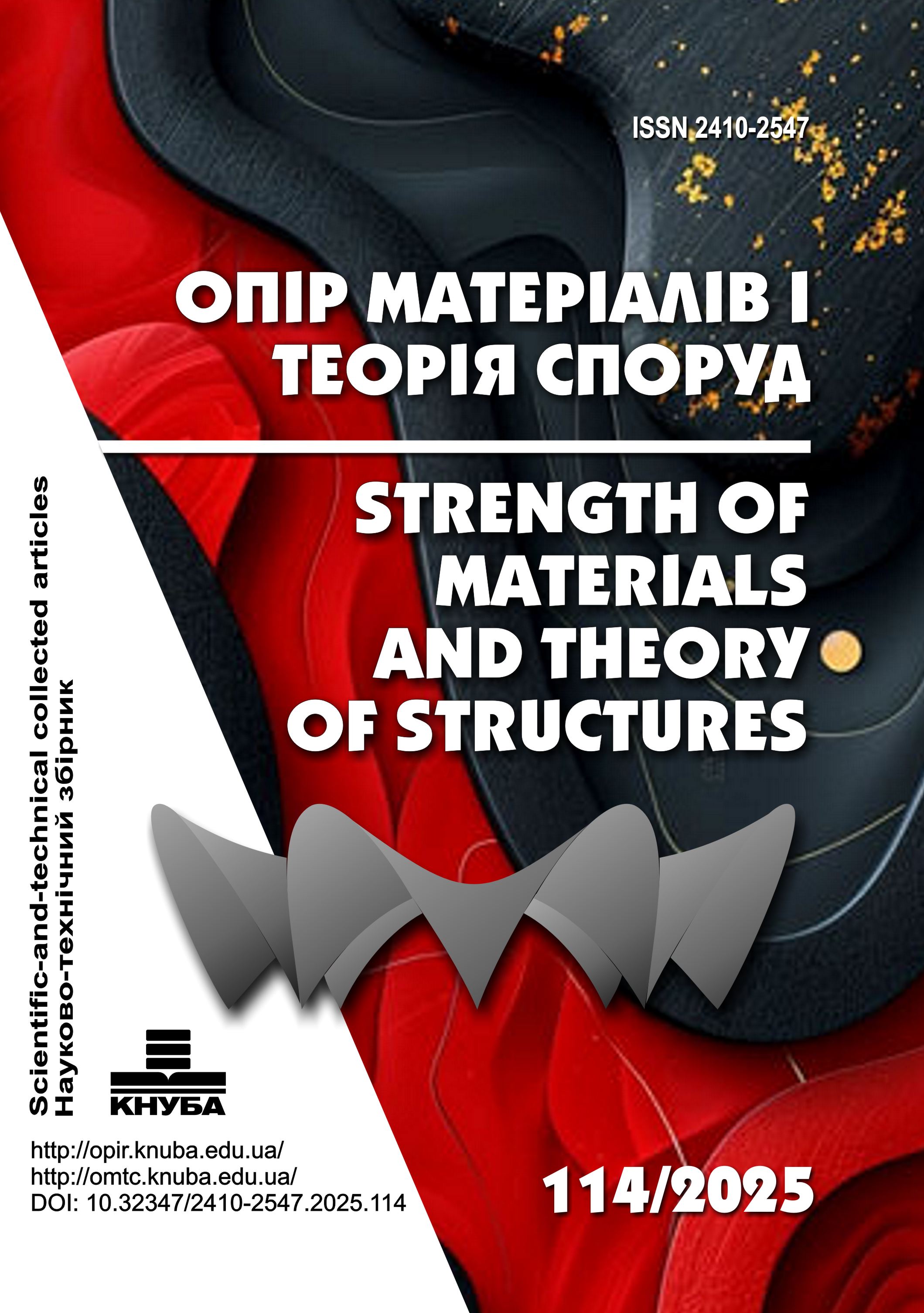Development of the optimal composition of gypsum self-leveling floors and comparative analysis with commercial mixtures
DOI:
https://doi.org/10.32347/2410-2547.2025.114.284-291Keywords:
dry building mixtures, gypsum poured floors, consumer properties, composition modification, reinforcing component, basalt fiber, laboratory tests, creep, hardening time, compressive strength, tensile strength during bending, abrasionAbstract
The article is devoted to the development of optimal composition of gypsum self-leveling floors by adding basalt fiber. Thestudyexaminestheeffect of there in forcing component on the main quality parameters including compressive strength, flexuralstrength, wear resistance and porosity. Laboratory tests were conducted for three experimental mixtures with different proportions of gypsum binder, water and basalt fiber. Scanning electron microscope microscopic analysis showed that the addition of basalt fiber increased the adhesion between fiber and gypsum, reduced porosity and improved mechanical properties.
For comparison, the developed composition was analyzed along with three commercial mixtures presented on the Ukrainian market: “Budmeister D-319”, “Polymin TP-5” and “BaumitNivelloQuattro”. Commercial samples were evaluated for compressive and flexural strength, microstructural integrity and wear resistance.
The study confirmed that the addition of basalt fiber to gypsum self-leveling floors significantly improves their mechanical performance, microstructural density and durability. Further studies are recommended to evaluate the long-term performance of the coatings, their thermal conductivity, cost effectiveness and environmental impact.
References
Bondar` A.V., Koval`sky`j V.P., Ocheretnyj V.P. y` Burlakov V.P. Tsementnye sukhye stroytelnye smesy s uluchshennymy teplozvukoyzoliatsyonnymy svoistvamy dlia ustroistva elementov polov hrazhdanskykh zdanyi (Cement dry building mixes with improved heat and sound insulation properties for the construction of floor elements in civil buildings). Mezhdunarodnyj pery`ody`chesky`j recenzy`ruemyj nauchnyj zhurnal «International periodic scientific journal SWorldJournal», Issue # 1, rr. 46-52, 2019. DOI: 10.30888/2410-6615.2019-01-01-043.
Efekty`vni gipsovi materialy`: monografiya (Effective gypsum materials: monograph)/ Dvorkin L. J., Gavry`sh O.M., Bezusyak O.V. tainshi; zared. L. J. Dvorkina. - K. : Pavlenko, 2013. - 239 s.
Zaxarchenko P.V. Suchasni kompozy`cijni budivel`no-ozdoblyuval`ni materialy`: pidruchny`k (Modern composite building and finishing materials: a textbook) / P.V. Zaxarchenko, E.M. Dolgy`j, Yu.O. Galagantainshi. -K.: KNUBA, 2005. -512 s.
Kazy`magomedov Y`.E. Povysheny`e stojkosty` naly`vnyh polov k y`sty`rany`yu (Increasing the resistance of self-leveling floors to abrasion) / Y`.E. Kazy`magomedov, S. Yu. Sheptun // Naukovy`jvisny`kbudivny`cztva, zazag. red. d-ratexn. nauk D. F. Goncharenka. – Xarkiv: XNUBA, 2015. – S. 69-73.
Karapuzov E.K. Suhye stroy`tel`nye smesy (Dry building mixes) / E. K. Karapuzov, G. Lutcz, X. Gerol`d y` dr.// – K.: Texny`ka, 2000. – 226 s.
Maksy`menko A.A. Suhi budivel`ni sumishi dlya pidlog na osnovi magnezial`nyh kompozy`cij (Dry construction mixtures for floors based on magnesia compositions). dy`s. kand. nauk., Pry`dnipr. derzh. akad. bud-vataarxit, Dnipro, Ukrayina, 2013.
Pidlogy` u suchasnomu budivny`cztvi: naukove vy`dannya (Floors in modern construction: scientific publication.). KarapuzovYe.K., Soxa V.G., Usherov-Marshak O.V. ta inshi. K.: Vy`shha osvita, 2012. – 232 s.
Salamaha L.V. Suhi budivel`ni sumishi z bazal`tovy`my` voloknamy` dlya vlashtuvannya elementiv pidlogy` (Dry building mixtures with basalt fibers for arranging floor elements). dy`s. kand. nauk., Pry`dnipr. derzh. akad. bud-vataarxitektury`, Dnipro, Ukrayina, 2010.
Troyan V.V. Suhy sumishi ta rozchy`ny` na yih osnovi dlya vlashtuvannya pidlog promyslovyh budivel` (Dry mixes and solutions based on them for arranging floors in industrial buildings). dy`s. kand. nauk., Ky`yivs`ky`jnacz. un-t budivny`cztva i arxitektury`, Ky`yiv, 2007.
Downloads
Published
Issue
Section
License

This work is licensed under a Creative Commons Attribution 4.0 International License.
Authors retain copyright and grant the journal right of first publication with the work simultaneously licensed under a Creative Commons Attribution License that allows others to share the work with an acknowledgement of the work's authorship and initial publication in this journal.

